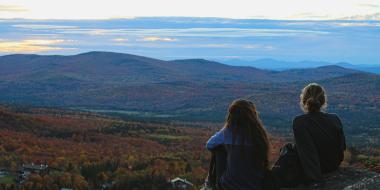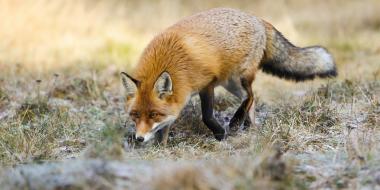Summer is done, the school shopping is completed, the leaves are changing colors, the birds are starting their journey to migrate south, and gone are the days of sitting by the fire listening to the crickets in the evenings.
However, nature and the outdoors do not have to disappear entirely! Children and nature go together— or should (with 90% of youth failing to meet the daily requirements of Canada’s Physical Activity Guide). Scary, I know! Recent studies document the importance of introducing children to the natural world, beginning in the early years. Their social, emotional, and physical health depends on this exposure to develop. So, let’s take a step back and let nature motivate the future generation!
Benefits of Including Nature in the Curriculum
There’s no better place to stimulate nature curiosity than in school (where children spend most of their day). With the help of adults, children can learn about being gentle and respecting other living things. Nature also provides other benefits such as:
- Fostering curiosity, exploration, imagination and patience (something that can be very difficult when you are sitting in a classroom).
- Children learn important concepts in science through sensory exploration of the outdoors (physical properties of natural materials such as soil, rocks, sticks, leaves and water).
- Being outdoors regularly helps children release energy and be less stressed, which allows them to focus on quieter tasks. Furthermore, the interest that nature holds for children calls for their concentration skills.
- Exposure to nature also enhances young children’s language development. This is because children will inquire about the names of the new things they investigate and they seek words to describe the processes they observe.
- Nature provides opportunities to be outside and more physically active. Children who are physically active are more likely to become healthy adults.
How you can Include Nature in the Curriculum
There are multiple ways to bring nature into your classroom (or bring your classroom out in nature). Here is a list of ideas to get you started!
- Have a picnic with your classroom (You can discuss where your food comes from and whether the food you are eating grows in the ground or on trees).
- Have a schoolyard garden or wildlife habitat (where students can share some responsibilities in maintaining it).
- Create nature art (where students can create pieces of art out of rocks, leaves, sticks, bark, etc).
- Start a compost pile utilizing the school’s green space (This is a great way to make the connection between food, waste, and the nature at work).
- Teach your students how to recycle (Students will often share the information they receive at school with the people who surround them).
- Adopt a classroom pet (This is a great time to teach about animals and how to care for them).
- Organize a nature-inspired show and tell (Challenge students to bring something they find from their backyards or nearby parks and ask them to talk about their item. This promotes speech development and creates an opportunity to learn about habitats and ecosystems).
All of these ideas assist children in developing a connection to the environment, through hands on experiences and questioning. These are but a handful of ideas - go outside, smell the fresh air and let nature inspire you!
As Debbie Handler and Ann S. Epstein have stated in The Extensions Curriculum Newsletter:
“Everything around us is connected to nature. Most of our food originates in nature — growing from the soil, swimming in the sea, flying through the air, or walking on the earth’s surface. Fiber from plants and the skins and other parts of animals provide materials for our clothing. Nature inspires, refreshes, and nurtures us. When experiences with nature are embedded in the preschool curriculum and daily routine, children benefit physically, emotionally, and intellectually as they have new experiences, exercise their bodies, and enjoy the feeling of freedom that comes from being connected to the natural world”.






